The most valuable metal detector finds in history
Rewarding detective work!
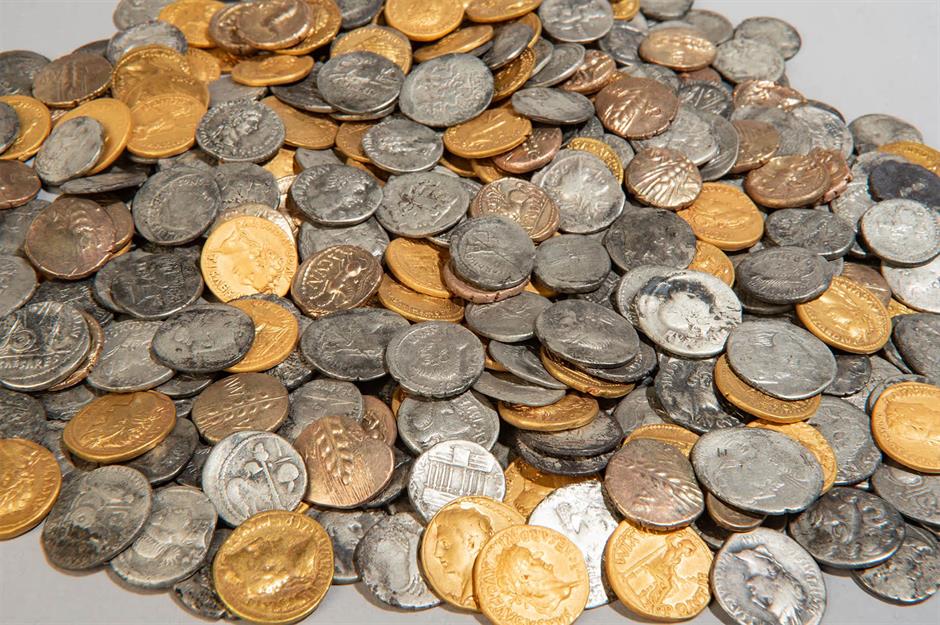
The recent discovery of a trove of ancient British coins by two amateur archaeologists is a wonderful reminder of the undiscovered treasures buried beneath our feet. The Bunnik hoard (pictured), found near Utrecht in the Netherlands, includes 44 rare gold coins bearing the name of Celtic king Cunobelinus dating back to the 1st century. Unearthed less than 30cm below the surface, the discovery is one of huge significance, although a monetary value has yet to be assigned.
While metal detecting is a fun hobby for many, some enthusiasts strike it lucky, unearthing treasures worth life-changing sums of money with their trusty detectors. From historical hoards to massive gold nuggets, read on to uncover some of the most valuable metal detector finds of all time.
All dollar values in US dollars unless otherwise specified. Currency conversions correct for the time of valuation. Pre-2022 figures adjusted for inflation.
Rare leopard coin: $216,000 (£173k)
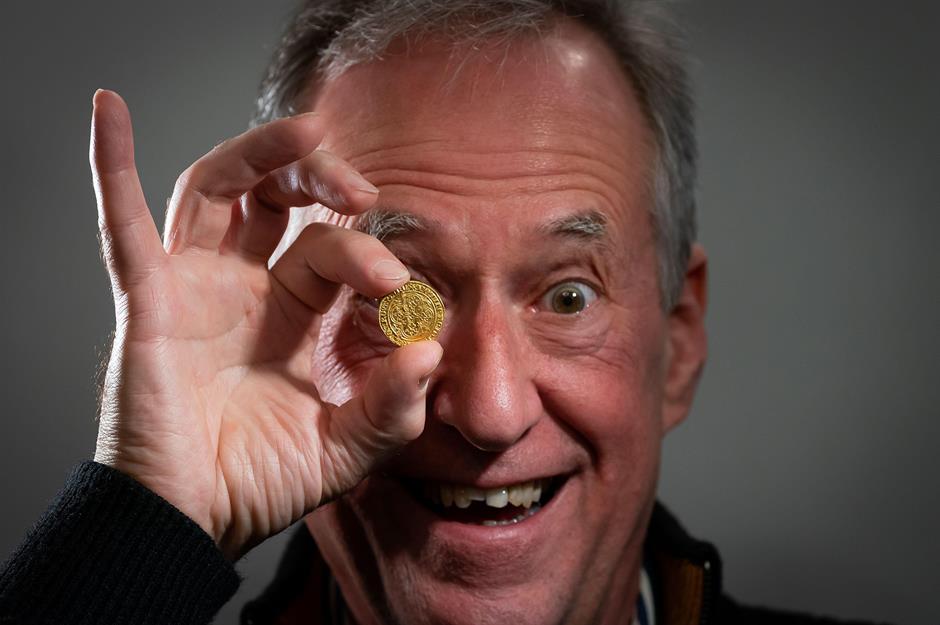
Metal detectorist Andy Carter had a lot to be thankful for when he discovered this rare gold coin in a field in Cambridgeshire, England.
Dubbed the 'leopard coin' as it depicts a leopard sitting under a banner, the florin dates from January 1344 and is one of just five known examples, according to an auctioneer at Dix Noonan Webb. In March 2022, it was bought by a private collector for £173,600 ($216k) including the buyers' premium. Its original estimate was a more modest £140,000 ($174k).
Two gold nuggets in Victoria: Two gold nuggets in Victoria: $246,000 ($298k/£239k today)
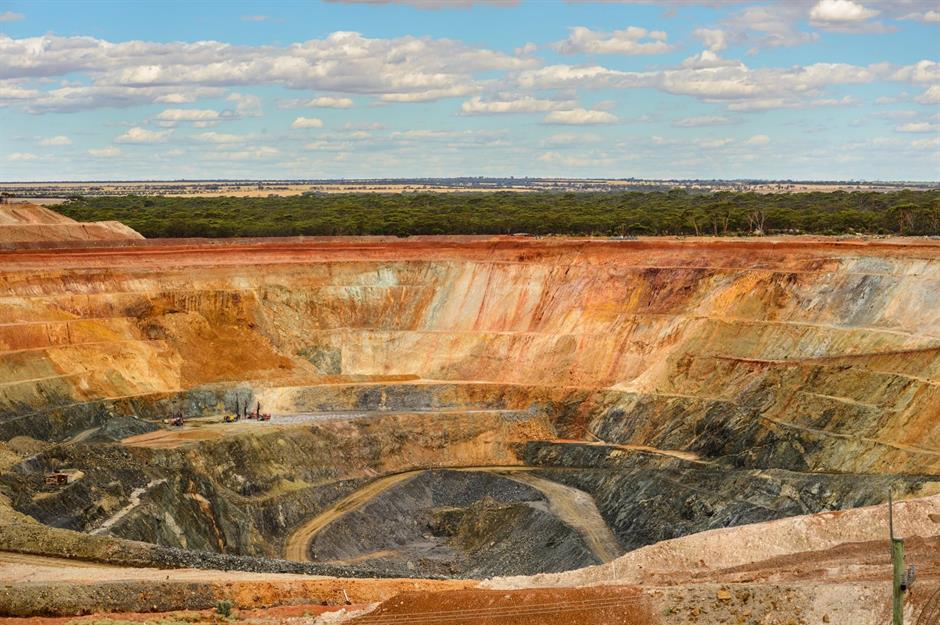
A lucrative gold discovery was made Down Under by keen metal detectorists Brent Shannon and Ethan West near Tarnagulla, Victoria.
The brothers-in-law unearthed two nuggets, which had a combined weight of 7.7lb (3.5kg). Experts estimated the gold had a value of AU$350,000 ($246k/£186k) – the equivalent of around $298,000 (£239k) in 2025 money. Shannon and West were featured on the TV show Aussie Gold Hunters in August 2020.
Ringlemere Cup: $391,000 ($631k/£507k today)
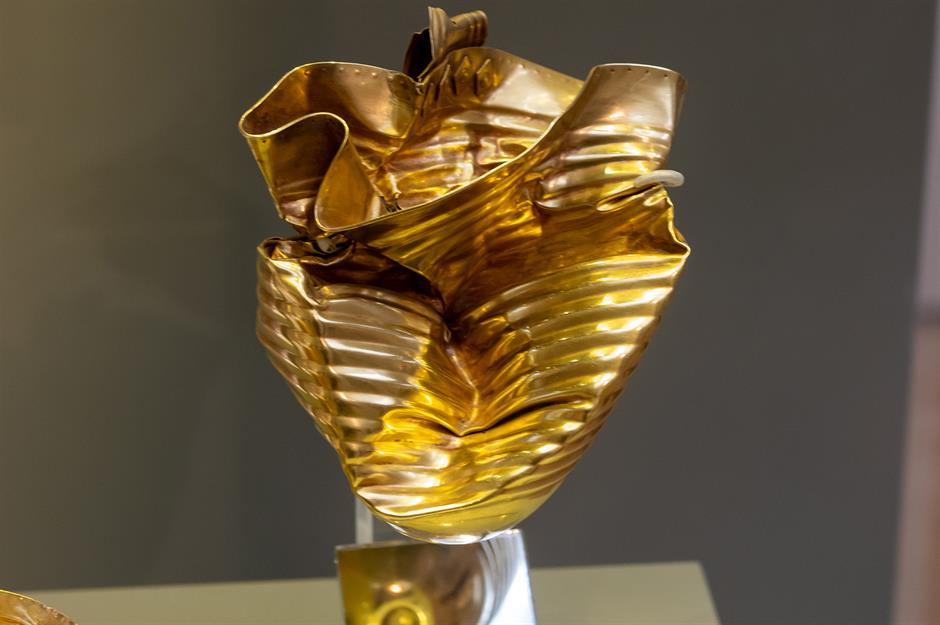
In November 2001, metal detectorist Cliff Bradshaw stumbled upon this crushed gold cup in a field near Sandwich, England, which turned out to be a Bronze Age chalice dating from 1700-1500 BC.
The following year, the chalice was snapped up by the British Museum for £270,000 ($391k), or approximately $631,000 (£507k) in today's money. The cash was split between Bradshaw and the landowner.
Mojave Nugget: $400,000 ($533k/£428k today)
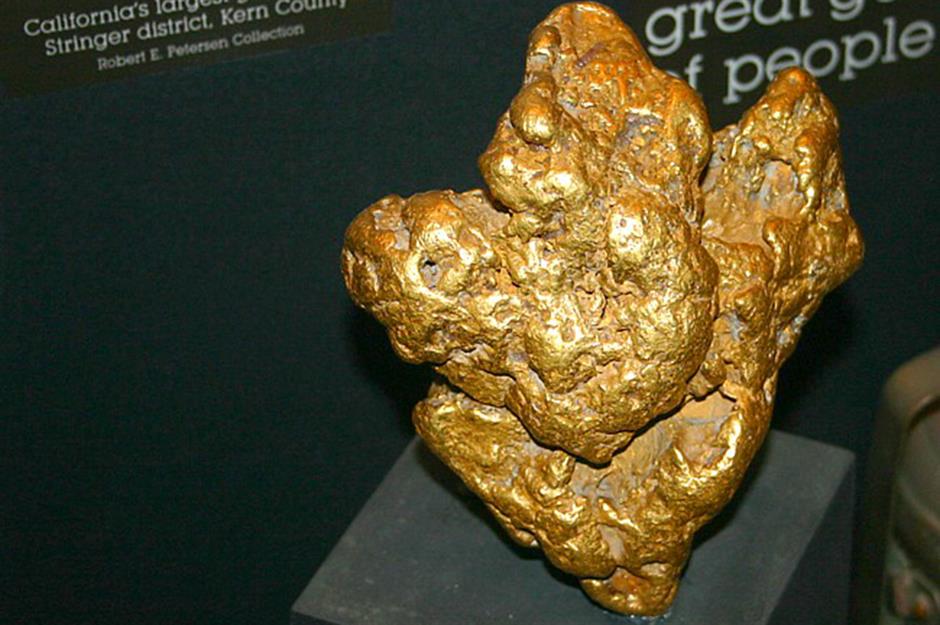
The largest gold nugget discovered in California, this famous 156-ounce (4.4kg) chunk of gold was found in 1977 in the Mojave Desert by prospector Ty Paulsen using his trusty metal detector.
In October 2014, the nugget was sold for $400,000 to Margie and Robert E. Petersen, who later donated it to the Natural History Museum of Los Angeles County. In today's money, the nugget fetched a whopping $533,000 (£428k).
Leekfrith Torcs: $400,000 ($548k/£440k today)
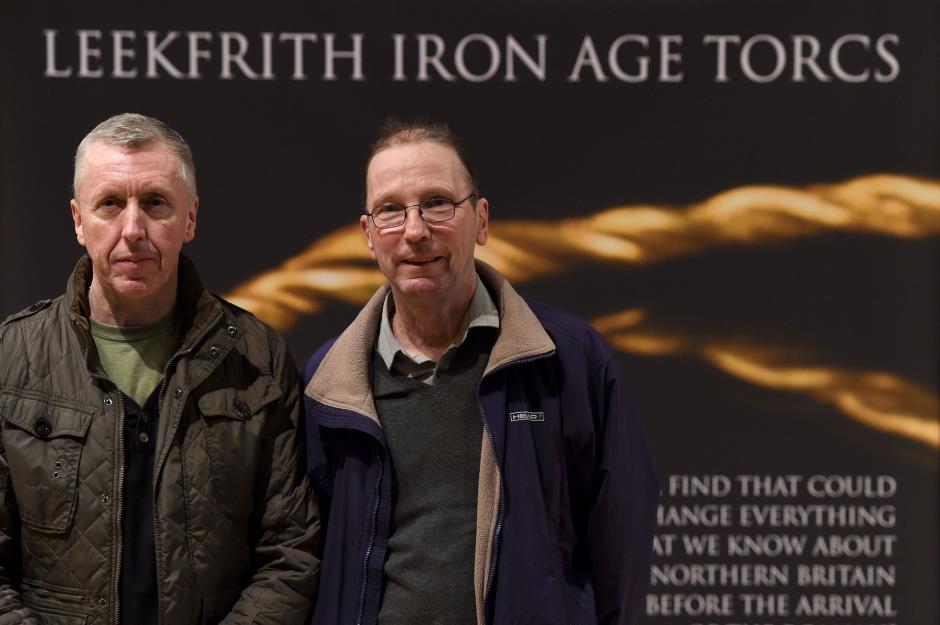
Friends Mark Hambleton and Joe Kania (pictured) hit the headlines in December 2016 when they discovered four Iron Age gold torcs in a field in Leekfrith, England. Dating from 400-250 BC, the torcs are thought to be the oldest pieces of Iron Age jewellery found in the UK.
At least 80% gold, the hoard was valued in 2017 at £325,000 ($400k), or around $548,000 (£440k) today.
Santa Margarita Gold Chalice: $413,000 ($549k/£441k today)
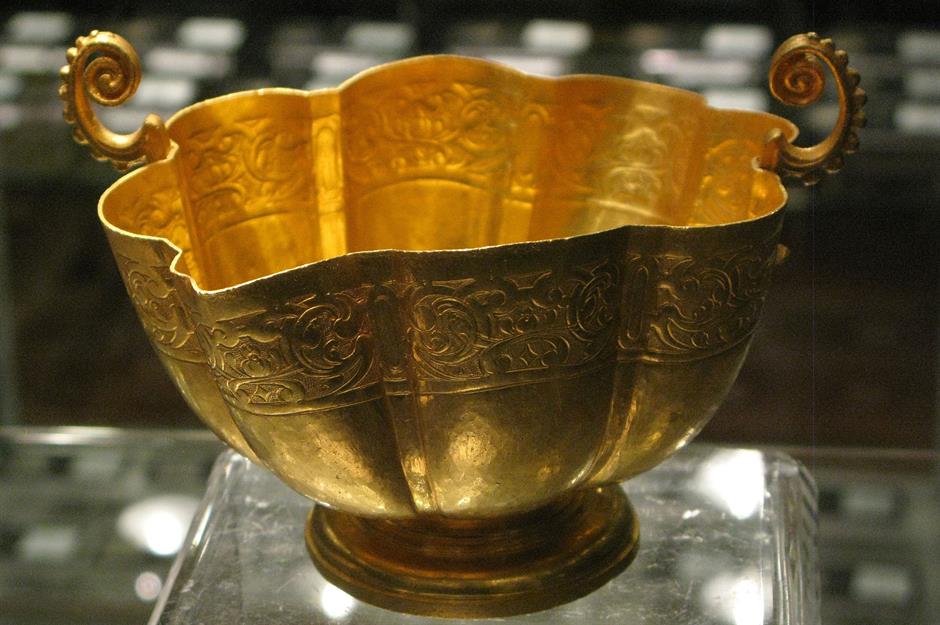
This incredible find was discovered in June 2008 by a diver involved in searching the Santa Margarita shipwreck from 1622 off the Florida Keys. Michael DeMar thought he'd come across a discarded beer can when his metal detector beeped during the dive, yet amazingly he'd discovered a gold chalice that was lost in the shipwreck of the Santa Margarita.
In August 2015, the chalice sold at auction in New York for $413,000. That's an impressive $549,000 (£441k) in today's money.
Shapwick Hoard: $428,000 ($635k/£509k today)
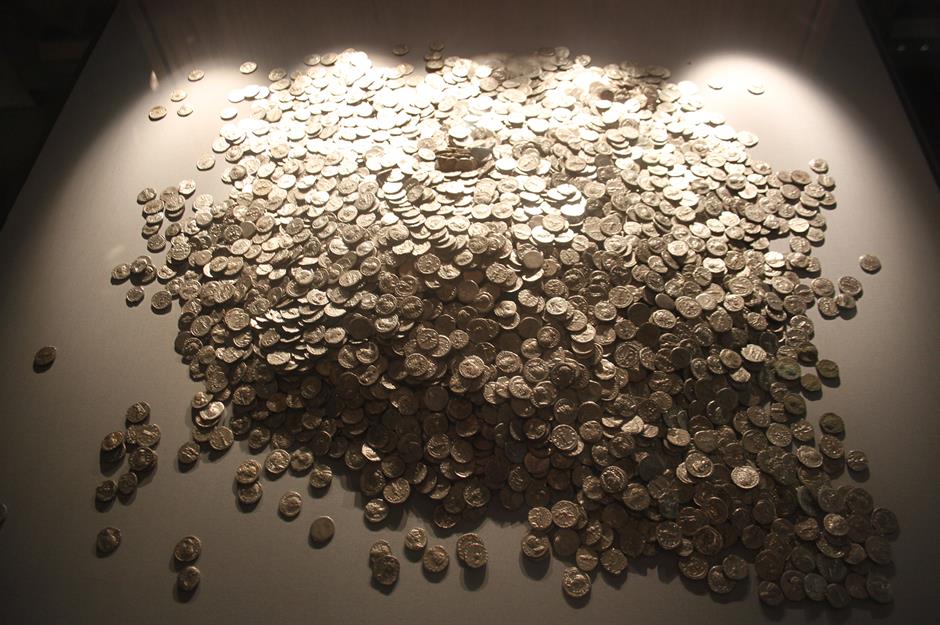
In September 1998, amateur treasure hunter Martin Elliot was trying to teach his cousin to use a metal detector when he came across a Roman coin just four inches (10cm) below the surface of the ground. Digging deeper, the pair discovered a massive hoard of more than 9,000 silver denarii coins from between the 1st century BC and the 3rd century AD.
The hoard, named after Shapwick in Somerset, England where it was found, was valued at £265,000 ($428k) in 2000 and sold to Somerset County Museum for this price. When adjusted for inflation, the hoard was valued at a plump $635,000 (£509k).
Milton Keynes Hoard: $469,000 ($695k/£558k today)
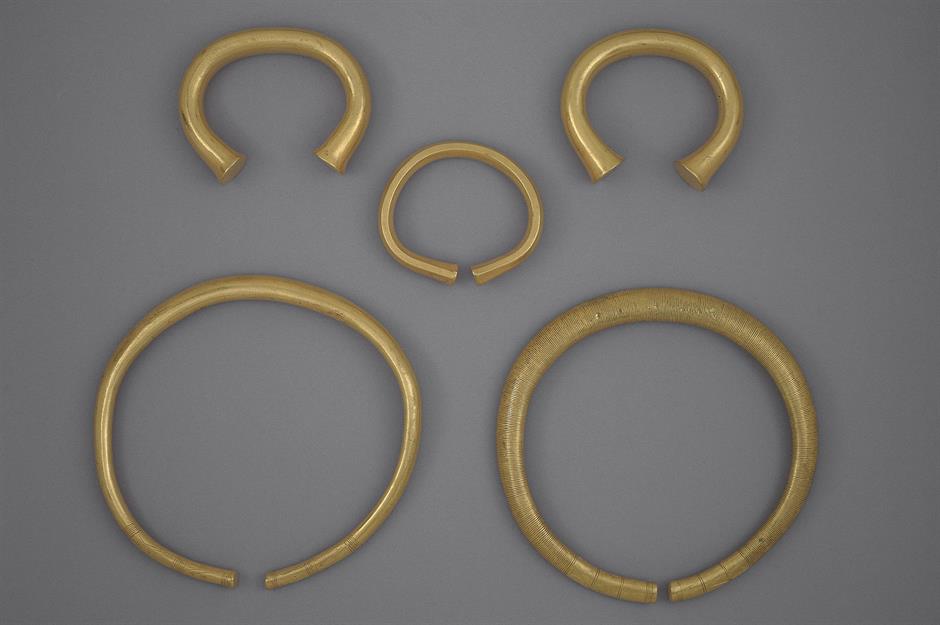
This ancient stash of gold torcs and bracelets was found by amateur treasure hunters Michael Rutland and Gordon Heritage in a field near Milton Keynes, England, in September 2000.
The hoard was snapped up for £290,000 ($469k) by the British Museum, with the finders receiving a 60% cut from the sale. In today's money, the hoard fetched around $695,000 (£558k).
Frome Hoard: $497,000 ($597k/£479k today)
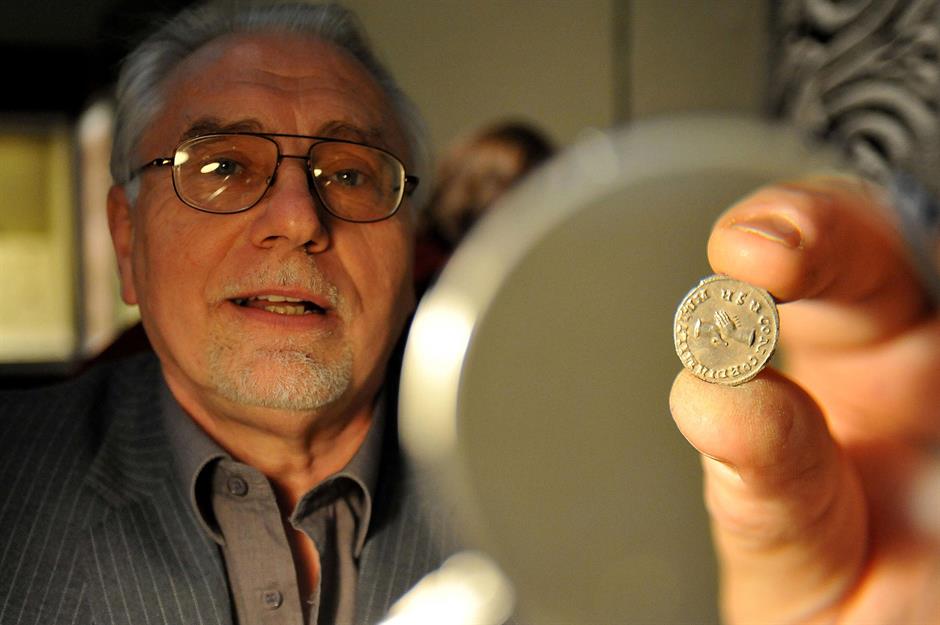
Voted in 2017 as the UK's top treasure hoard of the last 20 years by readers of British newspaper The Telegraph, this hoard was discovered near Frome in Somerset, England by Dave Crisp (pictured) in 2010.
Consisting of 52,503 silver and bronze coins dating between AD 250 and 290, it was purchased by the Museum of Somerset in 2011 for £320,000 ($497k). In today's money, that's an impressive $597,000 (£479k).
Winchester Hoard: $564,000 ($808k/£649k today)
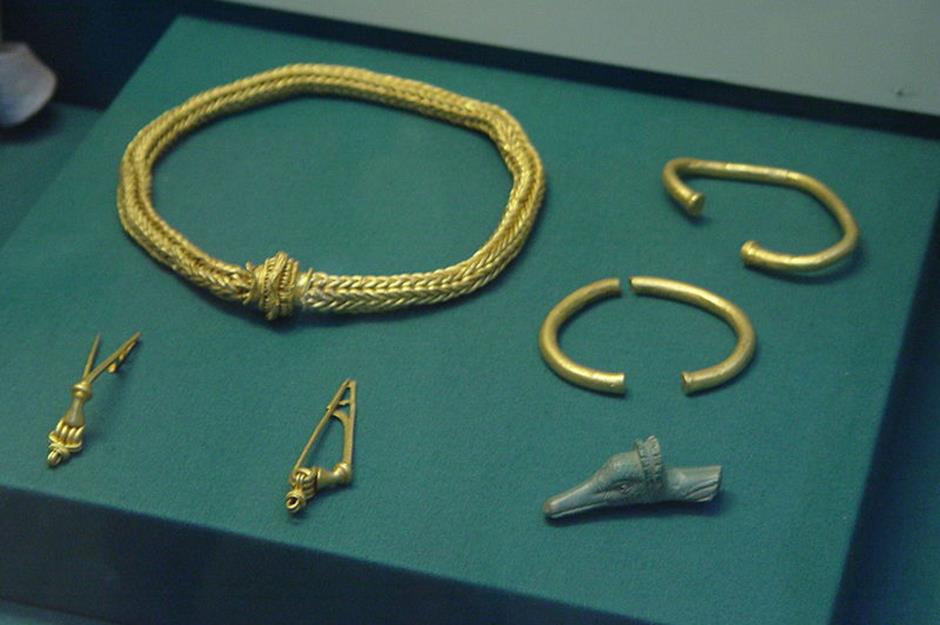
This fine example of Iron Age gold jewellery was discovered in December 2000 in a freshly ploughed field near Winchester, England by retired florist Kevan Halls.
The trove of exquisite gold pieces was purchased by the British Museum for £350,000 ($564k) in 2003. In today's money, that's around $808,000 (£649k).
Newark Torc: $603,000 ($764k/£613k today)
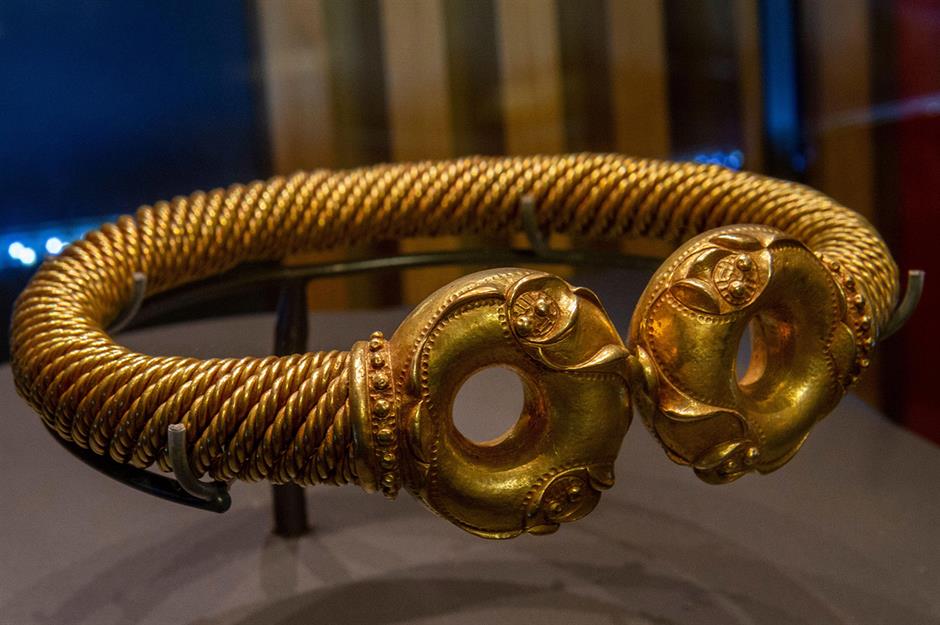
In February 2005, tree surgeon Maurice Richardson couldn't believe his luck when his metal detector beeped in a field in Newark-on-Trent, England and he unearthed this stunning Iron Age gold alloy torc.
Newark Museum bought the torc for £350,000 ($603k) in 2006, and the proceeds of the sale were divided between Richardson and the landowner, Cambridge University. In today's money, the torc was purchased for around $764,000 (£613k).
Stirling Torcs: $675,000 ($930k/£747k today)
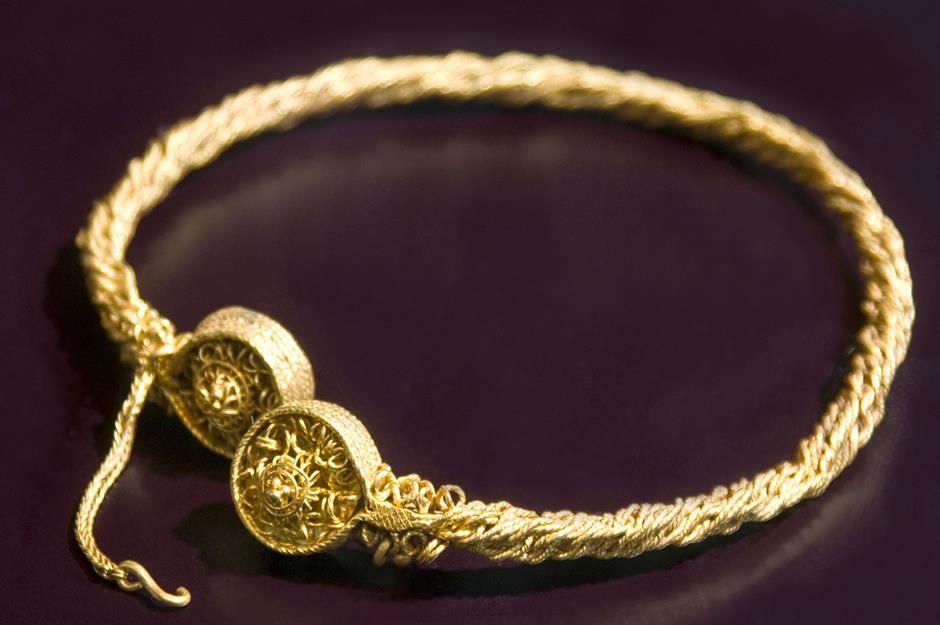
In September 2009, rookie metal detectorist David Booth found this hoard of Iron Age gold torcs in a Scottish field during his very first treasure hunt. Some people really do get all the luck!
The hoard earned Booth a reward of £462,000 ($675k). In 2024 money, that's a plump $930,000 (£747k).
Henry III coin: $884,000 (£648k)
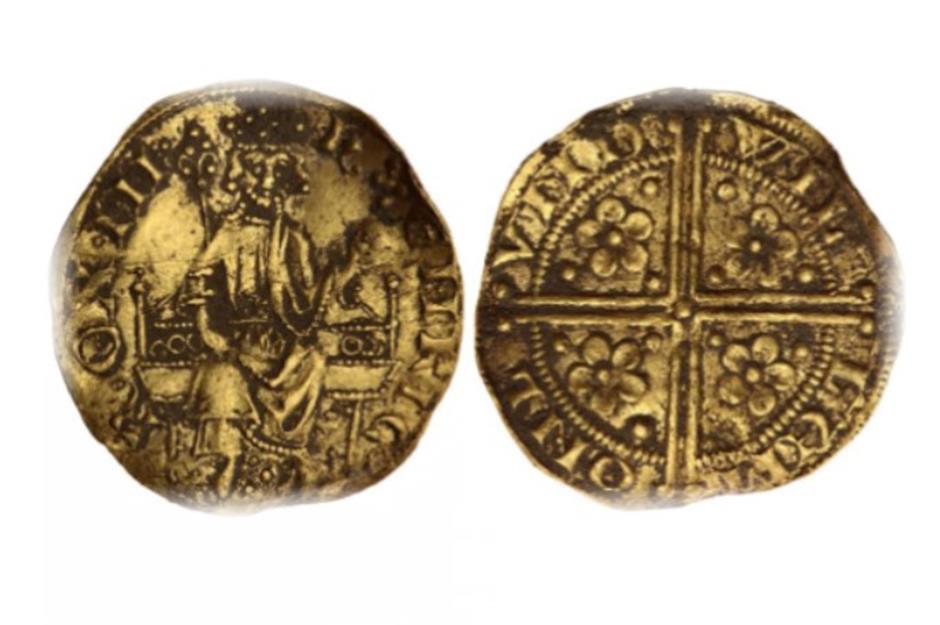
In September 2021, amateur metal detectorist Michael Leigh-Mallory, who rediscovered his hobby after his children asked to go out detecting with him, struck it lucky when he discovered a rare coin buried in Devon farmland. England's "oldest gold coin", the piece is thought to have been struck in 1257 by Henry III's goldsmith William of Gloucester and is only the eighth known example.
It later sold for £648,000 ($884k) at London auctioneers Spink & Son.
Hand of Faith: $1 million ($3.5m/£2.8m today)
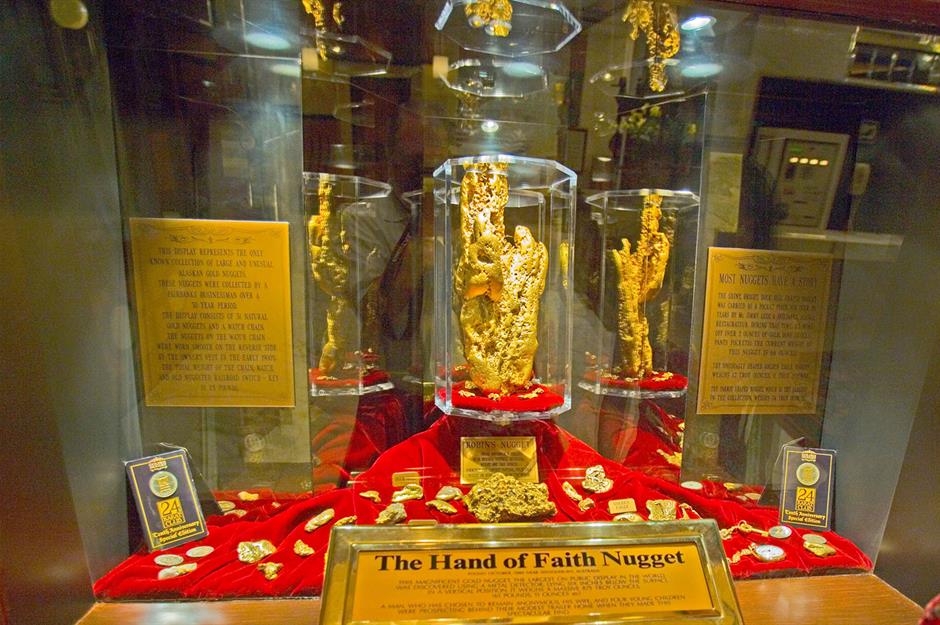
The largest gold nugget ever found using a metal detector, the 960-ounce (27.2 kg) Hand of Faith, was discovered by Kevin Hillier near Kingower, Australia back in September 1980.
Six months after being found, the giant gold nugget was, fittingly, sold to the Golden Nugget Casino Las Vegas for $1 million, which is around $3.5 million (£2.8m) in 2025 money.
Boot of Cortez: $1.55 million ($2.3m/£1.9m today)
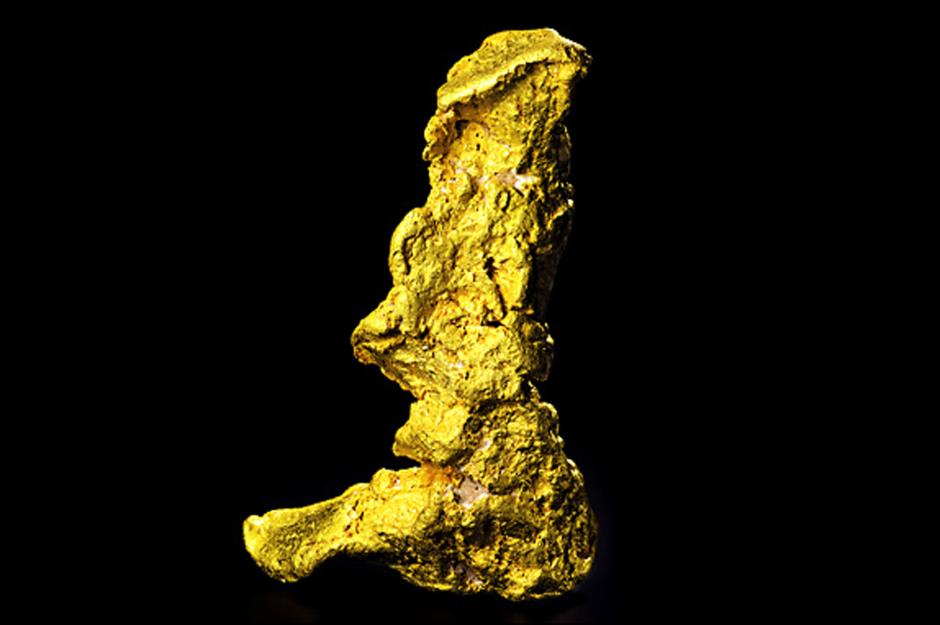
The largest surviving gold nugget found in the Western Hemisphere, the 389-ounce (11kg) Boot of Cortez, was discovered in 1989 by a prospector in Mexico's Sonoran Desert using a cheap metal detector.
A lucrative find, the huge boot-shaped nugget went on to fetch $1.55 million at auction in 2008, or around $2.3 million (£1.9m) today.
Lenborough Hoard: $2 million ($2.3m/£1.9m today)
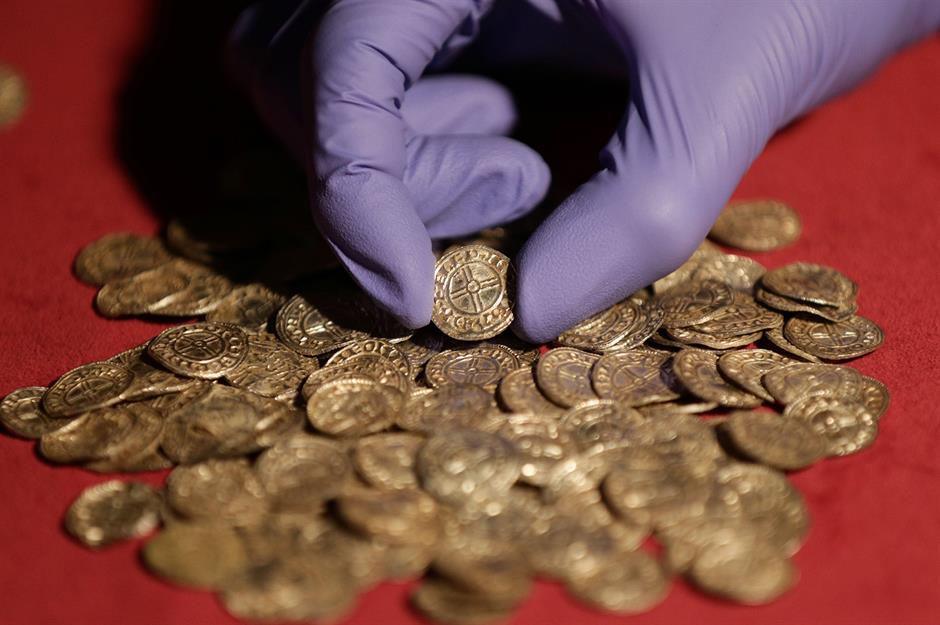
This hoard of more than 5,000 late Anglo-Saxon coins was found buried in a field near Lenborough, England, in 2014 by metal detectorist Paul Coleman. In June 2016, the Treasure Valuation Committee gave them a valuation of £1.35 million ($2m). That's around $2.3 million (£1.9m) in 2025 money.
The coins were purchased by the Buckinghamshire County Museum in 2017 after money was raised from donations and grants.
Galloway Hoard: $2.5 million ($3.4m/£2.7m today)
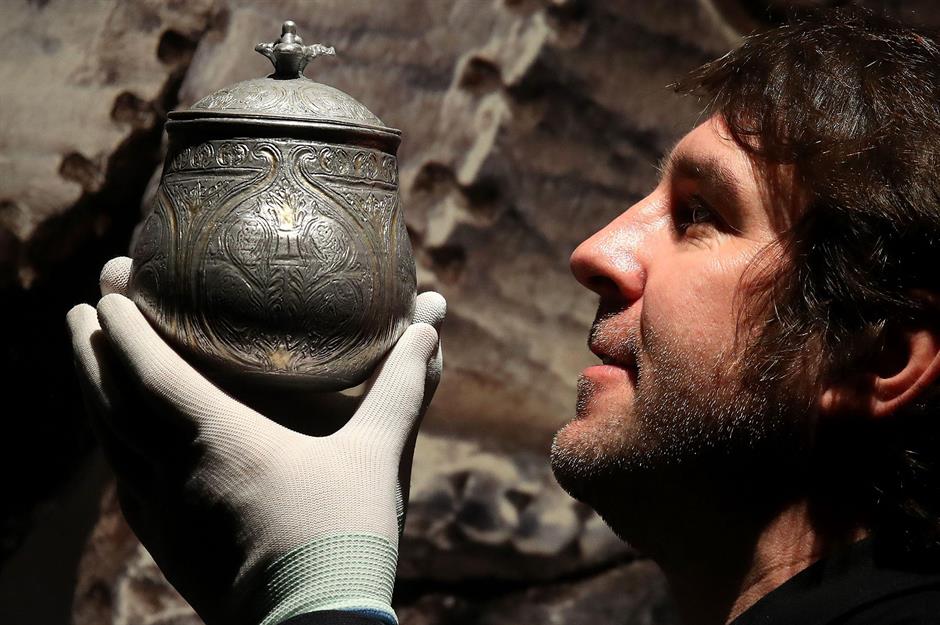
In 2014, metal detecting hobbyist Derek McLennan struck lucky when he chanced upon a treasure trove of more than 100 ingots, jewellery, gold, and silver from the Viking period in a field in Dumfries and Galloway, Scotland.
Three years later, National Museums Scotland acquired the hoard for £2 million ($2.5m). In today's money, that's $3.4 million (£2.7m).
Hoxne Hoard: $2.6 million ($4.7m/£3.8m today)
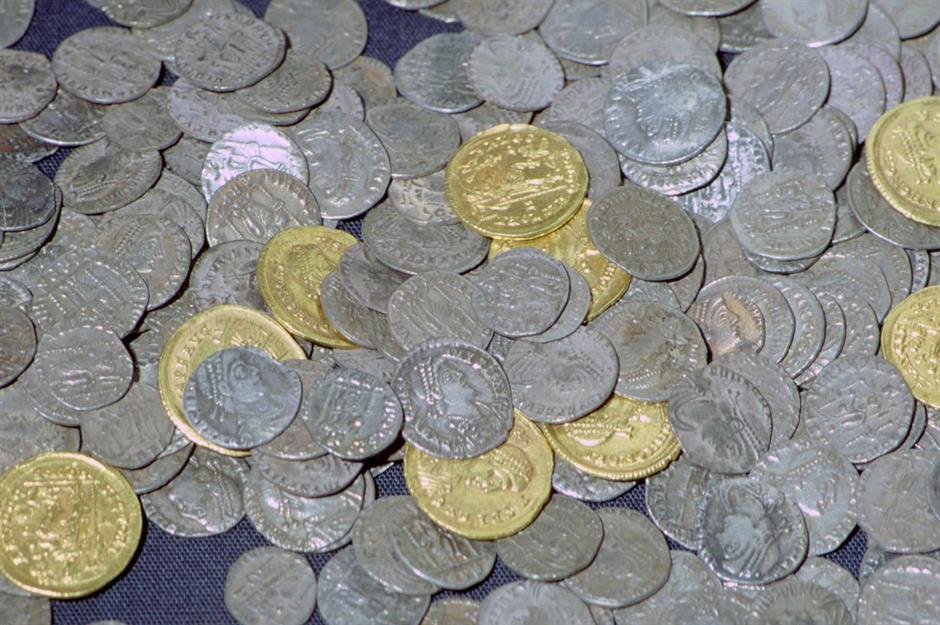
The largest stash of late Roman gold and silver discovered in Britain, the Hoxne Hoard, was found by metal detectorist Eric Lawes in November 1992. It was buried on farmland near Hoxne, England.
Valued at £1.75 million ($2.6m) in 1993, the money was shared between Lawes and the farmer Peter Whatling. When adjusted for inflation, the hoard is valued at a sensational $4.7 million (£3.8m).
The Crosby Garrett Helmet: $3.7 million ($4.4/£3.5m today)
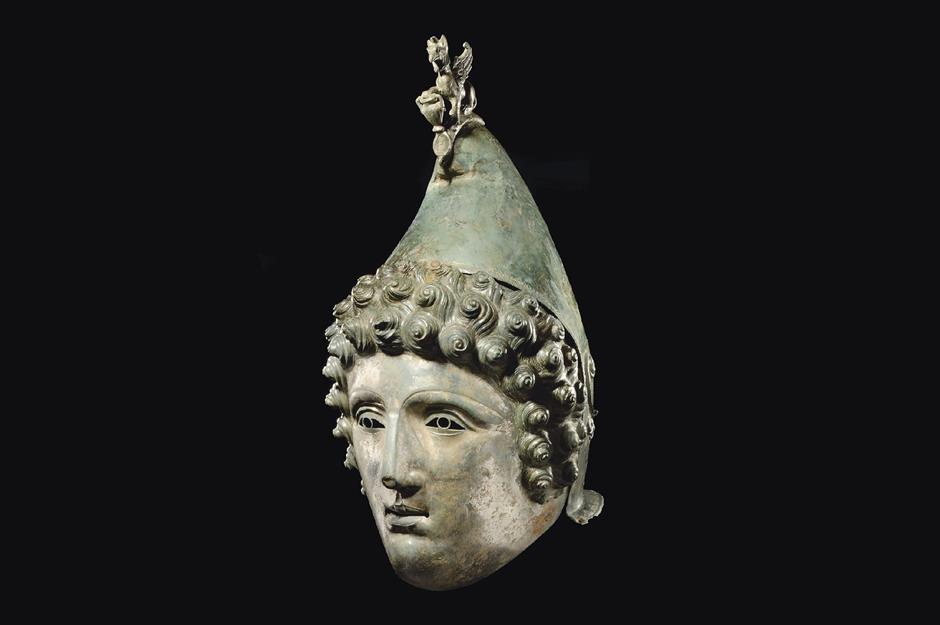
This rare Roman bronze helmet, discovered at Crosby Garrett in Cumbria, England is one of just three of its kind ever found in the UK. Discovered in May 2010 by an unnamed metal detectorist, the helmet was in 67 pieces but later reconstructed by auction house Christie’s before going up for sale.
Following a telephone bidding war, the winning bidder paid a massive £2.3 million ($3.7m) for the helmet. That's a remarkable $4.4 million (£3.5m) today.
Stolen Herefordshire hoard: $4 million (£3.2m)
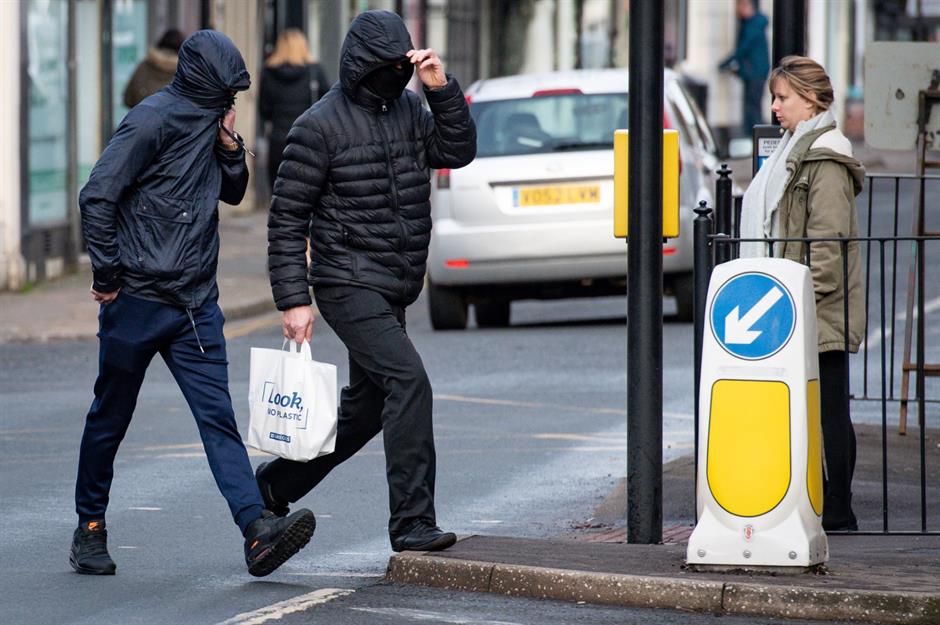
It’s a high-value hoard – with a twist. In June 2015, metal detectorists George Powell and Layton Davies (pictured arriving at Worcester Crown Court in late 2020) found a selection of Anglo-Saxon coins and jewellery on a farm near Leominster in England. The hoard contained 300 coins as well as a gold ring, bracelet, and crystal ball pendant. Yet the treasure hunters didn’t declare the hoard and instead illegally sold much of it on the black market.
In November 2019, the men and two accomplices were found guilty of the theft, with Powell receiving a sentence of 10 years, while Davies was jailed for eight and a half years. Only a quarter of the hoard, which was recently valued at more than £3.2 million ($4m), has been recovered.
Spanish Fleet gold coins: $4.5 million ($6m/£4.8m today)
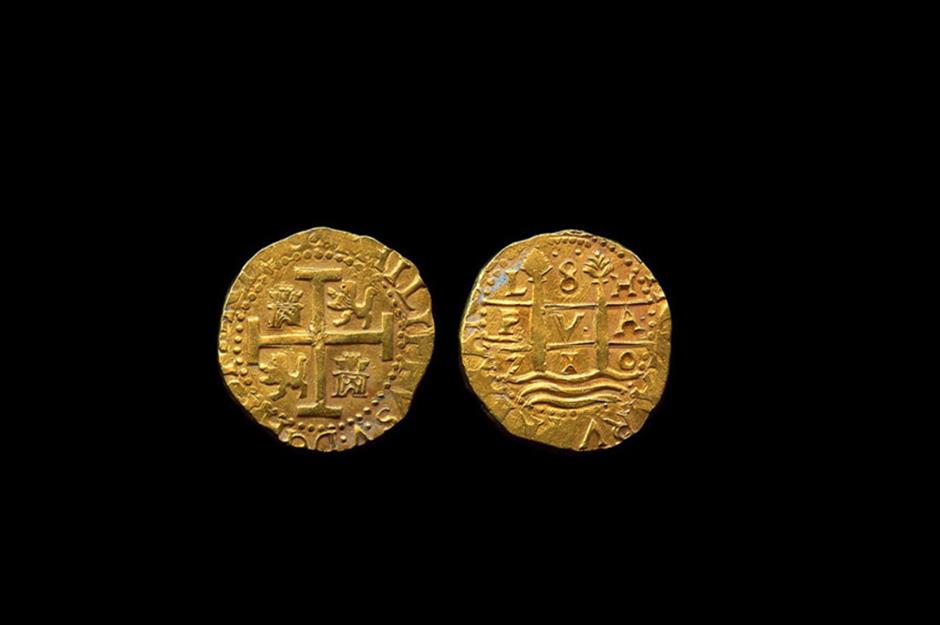
In 2015, diver William Bartlett, along with a treasure hunting team, discovered a 1715 shipwreck treasure trove off the coast of Florida. The haul included 350 gold coins, nine of which were rare examples known as 'royal eight escudos' (pictured), which were still in impeccable condition after 300 years underwater.
At the time the hoard was valued at $4.5 million (£2.9m), which is around $6 million (£4.8m) in 2025.
Staffordshire Hoard: $4.8 million ($6.6m/£5.3m today)
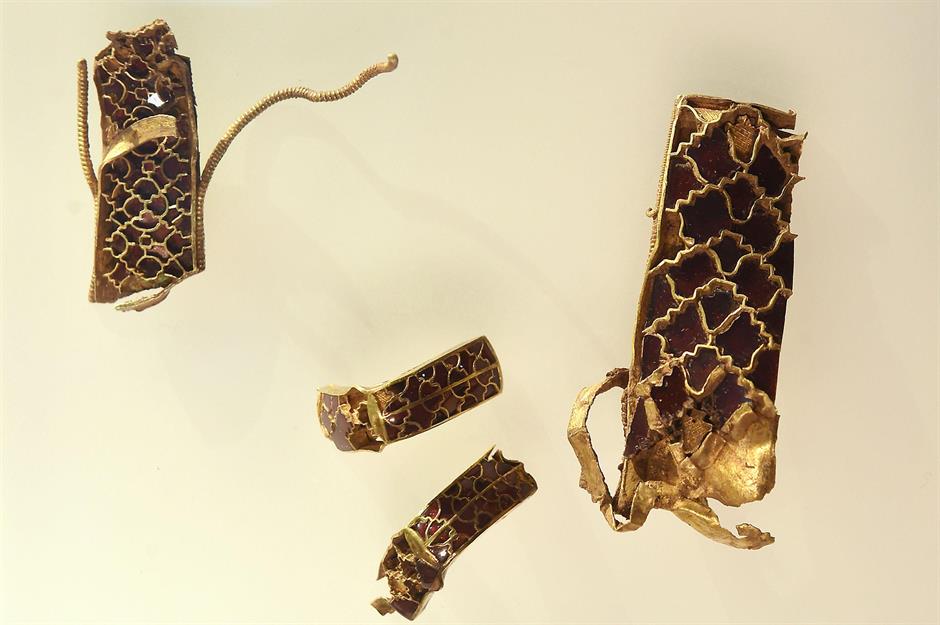
This metal-detecting discovery is the largest hoard of Anglo-Saxon gold and silver metalwork ever found. Terry Herbert stumbled upon the stash of 4,000 artefacts in a field in Staffordshire, England belonging to farmer Fred Johnson back in July 2009.
The pair shared a windfall of £3.3 million ($4.8m) when the hoard was bought jointly by the Birmingham Museum and Art Gallery and the Potteries Museum & Art Gallery. In today's money, that's around $6.6 million (£5.3m).
Battle of Hastings Coin Hoard: $5.4 million (£4.3m)

You might think tax evasion is something modern, but as a discovery in Derby's Chew Valley in England goes to show, it's been around for centuries. The hoard, discovered by couple Adam Staples and Lisa Grace (pictured) in August 2019, consisted of 2,528 coins from the year 1066, some of which had been tampered with. The illegally-made coins are known as mules, coins that feature designs from different dies (metal stamps) on each side.
By reusing an outdated die on one side of the coins, the moneyer would have avoided having to pay tax on a new die, making this hoard an early example of tax evasion. In 2024, the hoard was purchased by the South West Heritage Trust for £4.3 million ($5.4m), making it the UK's most valuable coin hoard ever.
Grouville Hoard: $5.8 million ($6.7m/£5.4m today)
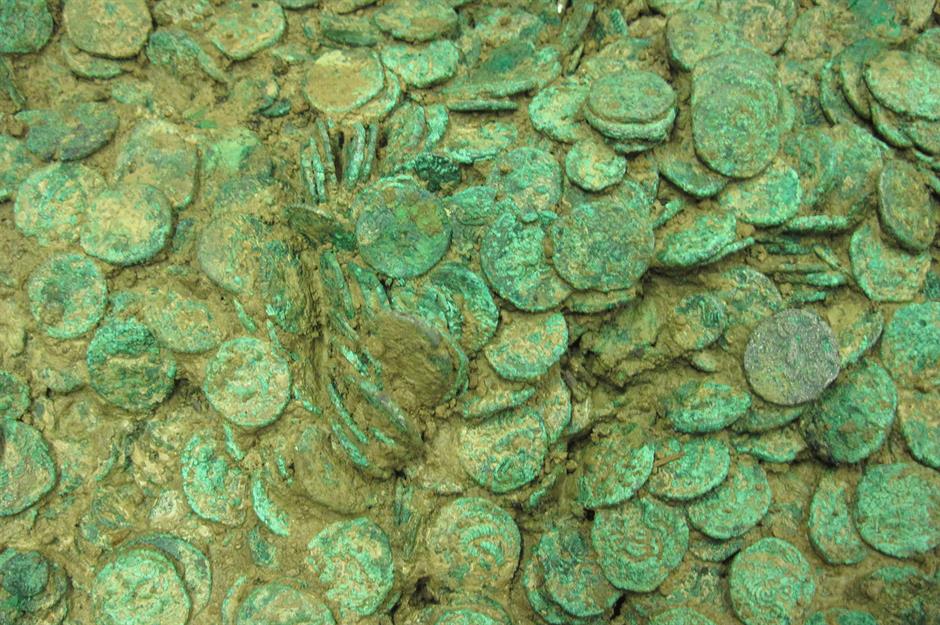
This hoard of 74,000 Celtic coins, along with torcs and gold and silver jewellery, was discovered by metal detectorists Reg Mead and Richard Miles in a field in Grouville, on the island of Jersey, in 2012. The giant clump of corroded-together metal was declared the world’s largest Celtic coin hoard ever found.
In 2021, it was purchased by the Government of Jersey for £4.25 million ($5.8m).
Derrynaflan Hoard: $7.9 million ($20.8m/£16.7m today)
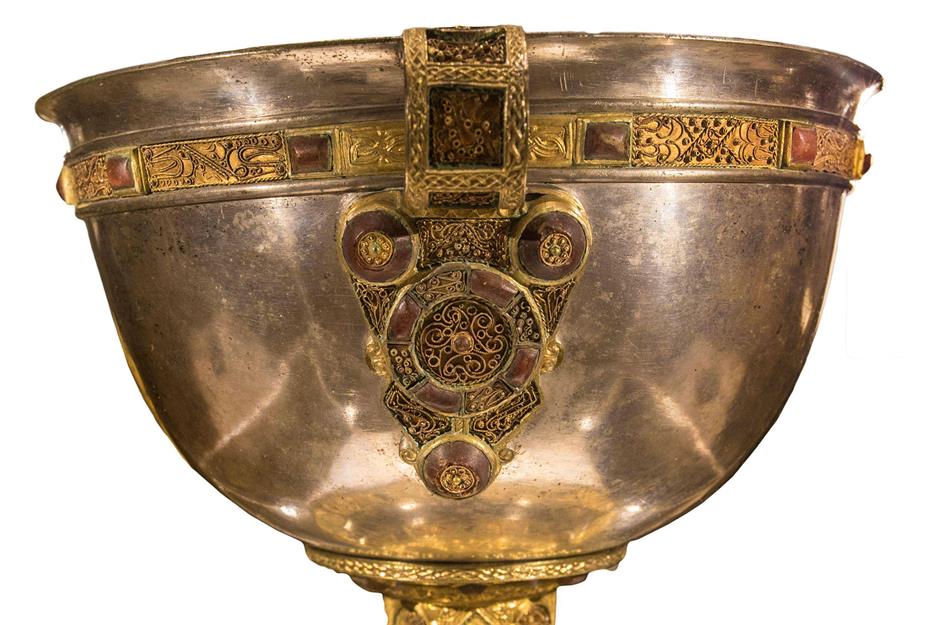
One of Ireland's most important archaeological finds, the Derrynaflan Hoard, was discovered by Michael Webb and his son Michael Junior in February 1980 near Killenaule, County Tipperary. The Webbs failed to get the correct permission to dig, and, as a result, the treasure of five 9th-century liturgical vessels was confiscated by the authorities.
The pair ended up receiving just 50,000 Irish pounds for it, despite the fact it had been valued at around £5.5 million ($7.9m) in 1986. In today's money, that's around $20.8 million (£16.7m).
Black Swan Project: $500 million ($760m/£610m today)
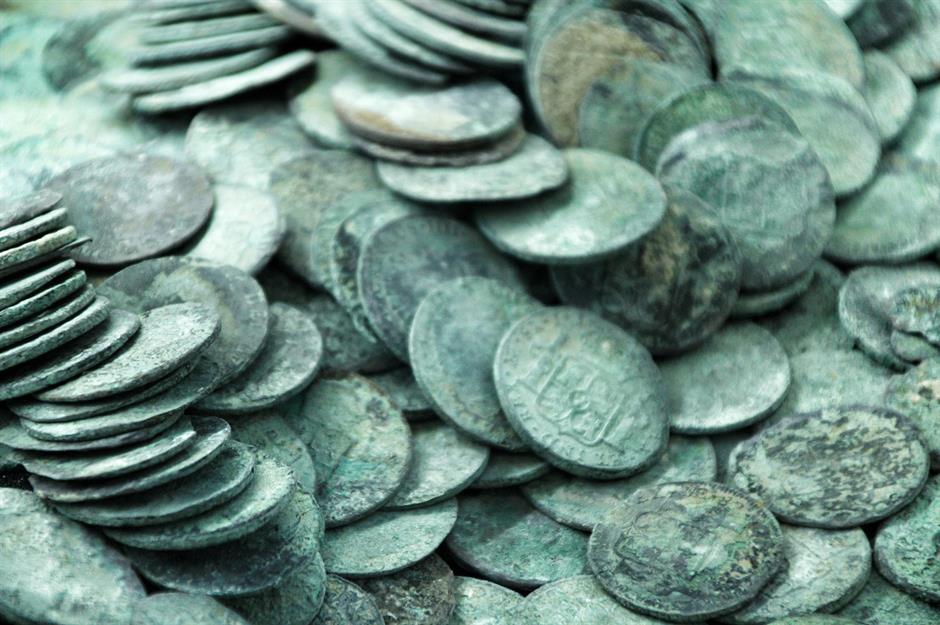
In 2007, salvage firm Odyssey Marine Exploration used metal detectors to find a staggering stash of gold and silver coins, which went down with a Spanish frigate off the coast of Portugal in 1804.
Valued at $500 million at the time, or about $760 million (£610m) today, the treasure was eventually claimed by the Spanish government following a legal battle with Odyssey in the US courts.
Denmark gold hoard: priceless
.jpg)
One of the largest treasure troves ever found in Denmark was unearthed in 2021. Amateur archaeologist Ole Ginnerup Schytz had recently acquired a metal detector and was walking the fields near Jelling, a town thought by historians to be the home of Viking-age kings between the eighth and 12th centuries, when he made the incredible discovery.
The hoard, weighing just 2.2lb (1kg), contains 22 gold objects dating from the sixth century. It includes a saucer-sized medallion, and an item representing the Roman emperor Constantine from the early fourth century. Some of the objects have runic motifs and inscriptions that may refer to the rulers of the time, but also to Norse mythology. The treasure went on display at Denmark's Vejle Museum in 2022.
Now discover 28 childhood toys that could be worth a fortune
Updated by Danielle McAdam
Comments
Do you want to comment on this article? You need to be signed in for this feature